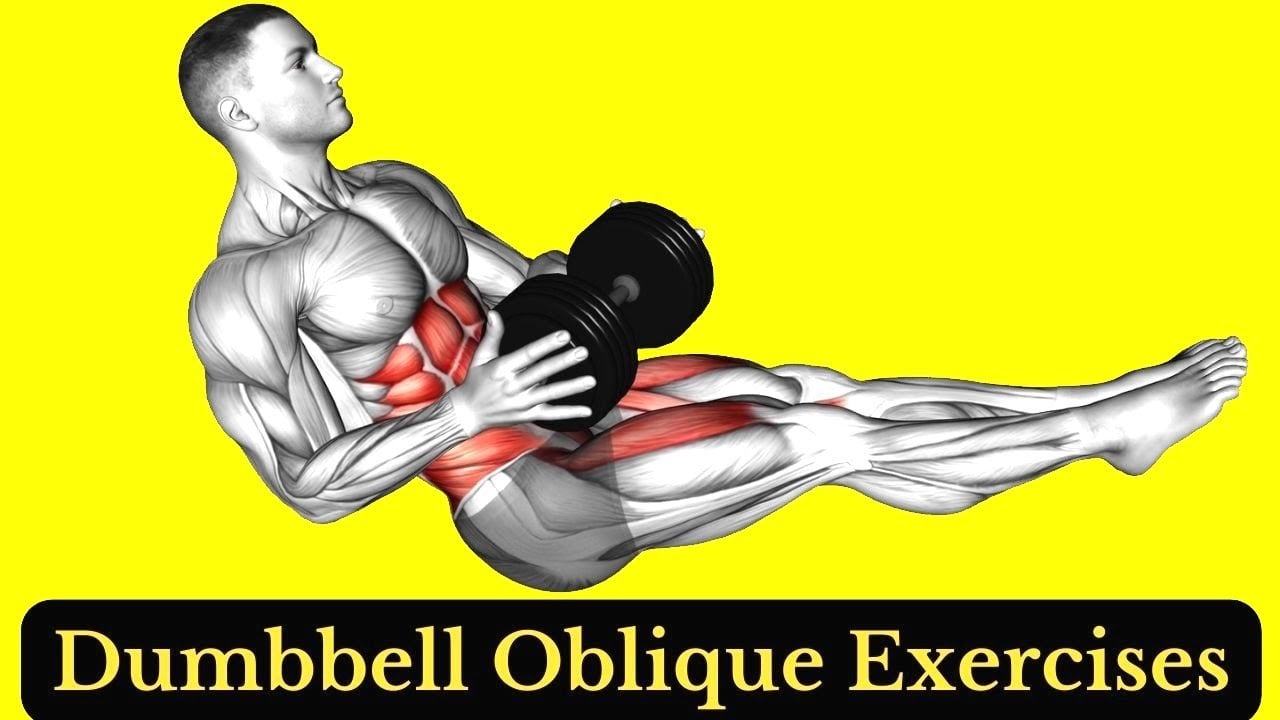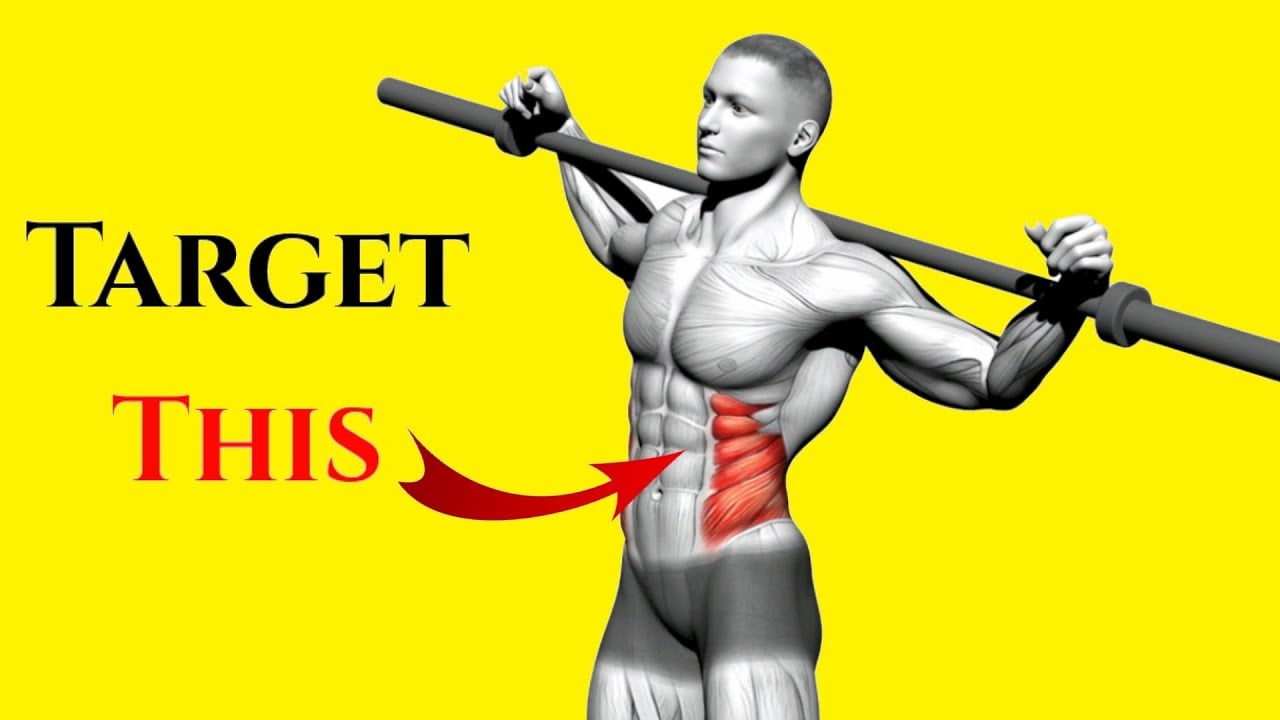Do you want to tone up and strengthen your core muscles, especially the obliques, with a dumbbell? Look no further!
Here, I will share the best and most effective dumbbell exercises specifically designed to target and engage the oblique muscles.
The dumbbell is a versatile and accessible tool that allows for an increased range of motion and muscle activation. It is, therefore, ideal for oblique-focused exercises.
In this blog, we will provide you with comprehensive information on the following topics.
- Oblique Muscles
- Best dumbbell oblique exercises
- Step-by-step instructions and proper form
- How to train your oblique with a workout routine

- Know About Oblique Muscles
- External Obliques
- Internal Obliques
- 12 Oblique Dumbbell Exercises
- 1. Dumbbell Side Bend
- 2. Dumbbell Russian Twist
- 3. Dumbbell Wood Chop
- 4. Side Plank Lateral Raise
- 5. Dumbbell Lunge With Twist
- 6. Dumbbell T Push-Ups
- 7. Dumbbell Windmills
- 8. Dumbbell Side Plank Reach Through
- 9. Dumbbell Side Plank Hip Lifts
- 10. Standing Dumbbell Oblique twist
- 11. Dumbbell Overhead Standing Bend
- 12. Dumbbell Farmers Walk
- How to Train Oblique With Dumbbell
- 1. Exercise Selection
- 2. Sets and Repetitions
- 3. Frequency
- 4. Progressive Overload
- 4. Core Integration
- 5. Proper Form and Technique
- 7. Beginner Dumbbell Oblique Workout Routine
- 8. Add Strength Training
- 15 Best Weighted Oblique Exercises For A Strong Core
Know About Oblique Muscles
The oblique muscles are a group of abdominal muscles located on the sides of the torso. They consist of the external and internal obliques, which run diagonally across the abdomen.
External Obliques
The external oblique is the outer visible layer that passes diagonally on each side of the rectus abdominis.
They are located between the lower rib region and the pelvis. These muscles help with side-to-side bending, spinal column flexion, torso rotation, and abdomen compression.
Your external obliques work cooperatively with your internal obliques.
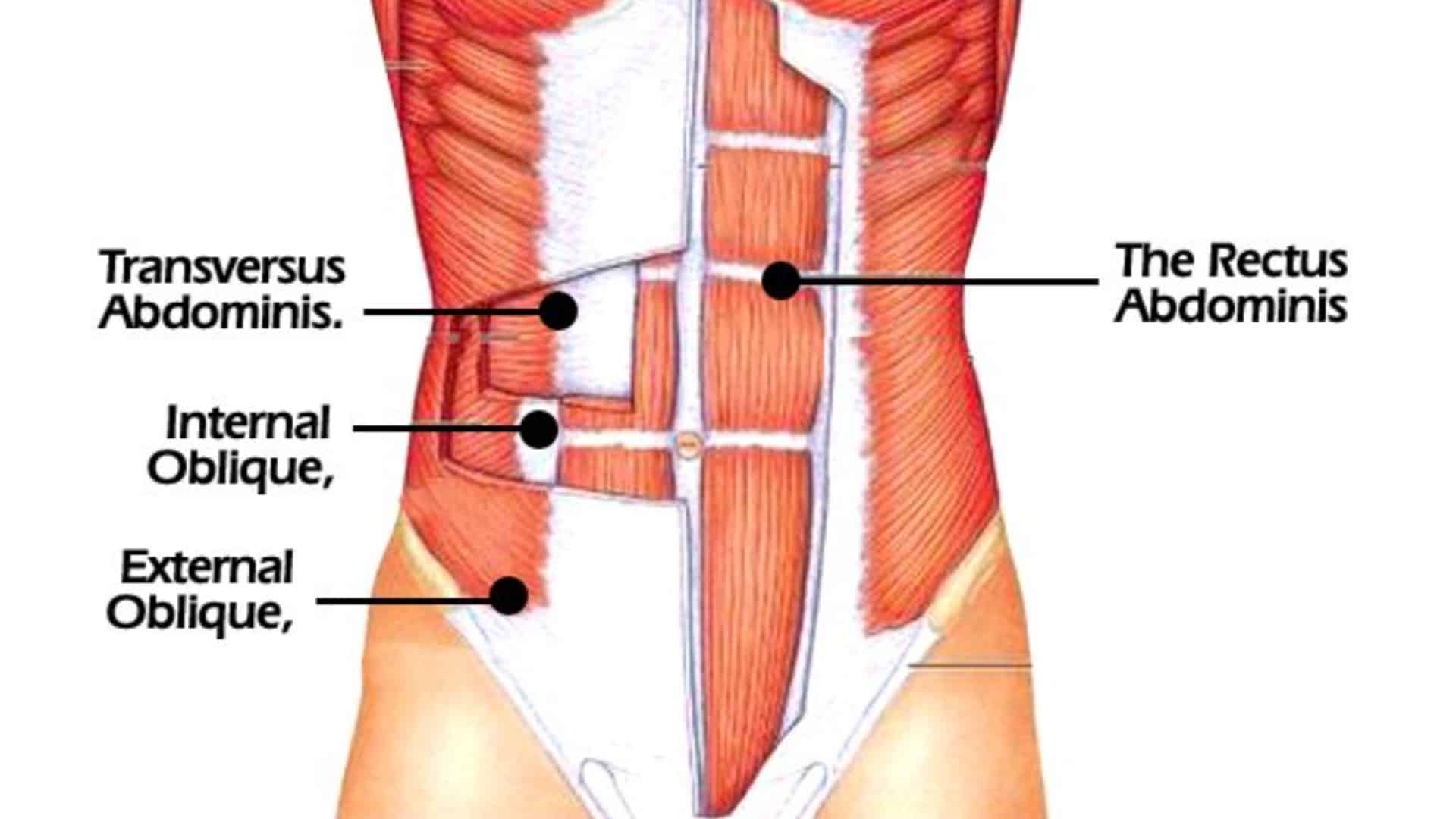
Internal Obliques
The internal oblique muscles lie under the external obliques and run into the lower back.
The fibers of the two muscles pass at right angles to one another; therefore, they are often referred to as opposite-side rotators.
In addition to rotating your torso, the internal obliques help to stabilize your body, keeping you balanced while you walk, run, throw a ball, or pick something up off the floor.
BODY FAT % CALCULATOR: KNOW YOUR BODY FAT PERCENTAGE TO GET VISIBLE ABS
12 Oblique Dumbbell Exercises
Dumbbell oblique exercises work your entire core, including rectus abdominis, transverse abdominis, and obliques. It also lets you do each side of the oblique separately.
1. Dumbbell Side Bend
The dumbbell side bends effectively target the internal and external obliques, strengthen the lateral flexion of your spine, improve spinal mobility, and help to develop a strong and stable core.
It is an easy core exercise to practice at home. If you’re new to the exercise, practice the movement with your bodyweight alone.
For more variations, try
- cable side bend
- kettlebell side bend
- Plate side bend.
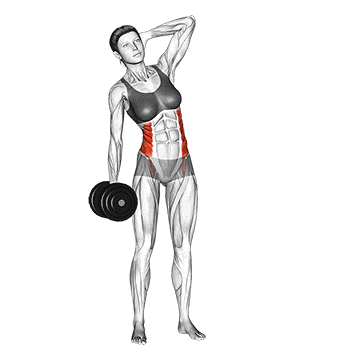
How To Do Dumbbell Side Bend
- Stand with your feet shoulder-width apart.
- Hold a dumbbell with a neutral grip in your right hand and your arm at your side.
- You can place your free hand behind your head.
- Bend sideways at the waist to the left as low as possible, using your oblique muscles to pull your torso down.
- Hold for a second and return to the starting position.
- Complete the desired number of reps and repeat on the other side.
Tips
- Keep the dumbbell close to your side, your elbow slightly bent, and your hips still.
- To work the oblique muscle, perform these exercises slowly and steadily.
- Avoid using a heavy dumbbell for this exercise. Large, overdeveloped oblique muscles will make your waist appear bulky.
2. Dumbbell Russian Twist
The Dumbbell Russian twist engages your core and strengthens your abs and oblique muscles, as well as your lower back.
This exercise helps to tone and trim your waist. It also helps to improve your balance, stability, and posture.
A more advanced way to perform the Russian twist is to raise your feet slightly off the floor. The elevated position of the feet increases the level of challenge.
It is one of my favorite exercises, and I use it to train and build strong core muscles.
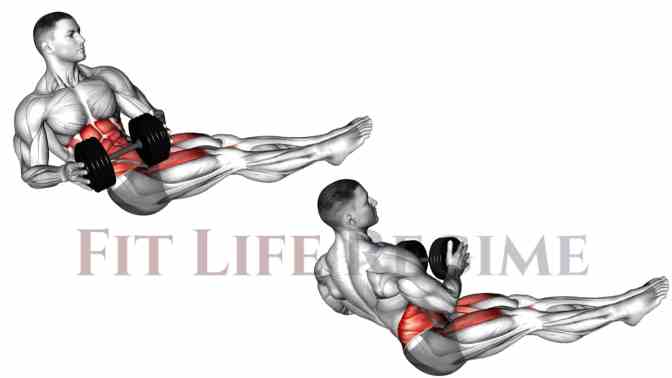
How To Do Dumbbell Russian Twist
- Sit on the floor or a mat with your knees bent and feet flat on the ground.
- Hold a dumbbell in your hands in front.
- Lean back slightly while maintaining an upright posture and engaging your core.
- Lift your feet a few inches off the ground to increase the challenge (optional).
- Twist your torso to the right, bringing the dumbbell outside your right hip.
- Pause briefly, then twist to the left, bringing the dumbbell outside your left hip.
- Continue alternating sides in a controlled manner for the desired number of repetitions.
Tips
- Keep your back straight at all times, and twist your torso only from the ribs up.
- Don’t move your head from side to side.
- Use a slow, controlled motion to target the muscles.
- Exhale as you twist, and inhale as you return to the starting position.
Know More: Best Abs Exercises: Upper Abs, Lower Abs, Obliques
3. Dumbbell Wood Chop
The Dumbbell wood chop is also known as the dumbbell up-down twist; you must add these oblique exercises to your dumbbell abs workout arsenal.
This is great for strengthening the torso’s twisting movement pattern and improving its ability to resist twisting forces.
It is a compound pulling motion and a functional exercise. While it primarily targets the abdominal and obliques, it also employs the shoulders, back, and glutes.
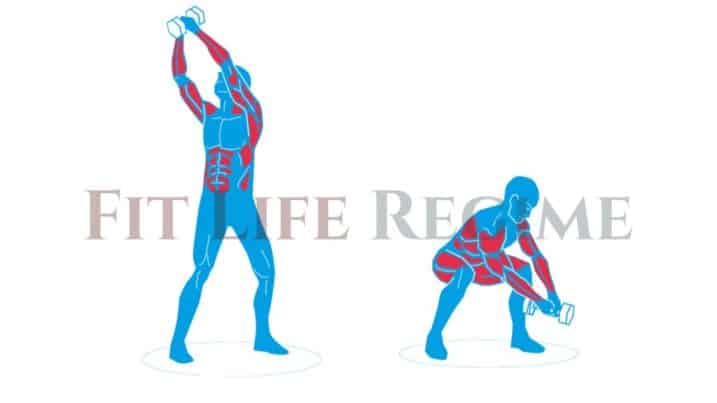
How To Do Woodchoppers With Dumbbell
- Stand shoulder-width apart.
- Hold the dumbbell with both hands, with either your fingers interlaced or with one hand over the other.
- Keep your arms straight and rotate the dumbbell diagonal downward until your torso turns to the other side and your hands are at knee height.
- Hold for a count of two. Then, slowly reverse the movement to return to the starting position.
- Repeat for the prescribed number of repetitions. Repeat the exercise on your opposite side.
- Aim for 3–4 sets of 10–15 reps a side.
Tips
- Don’t lock the knees and hips. Allow the hips and knees to rotate slightly.
- Keep your arms straight and shoulders locked in place.
- Control the weight the whole time while doing this dumbbell Abs Workout.
4. Side Plank Lateral Raise
The Side Plank Lateral Raise is a challenging exercise that combines the benefits of side planks and lateral raises to target the obliques, shoulder muscles, and core stability.
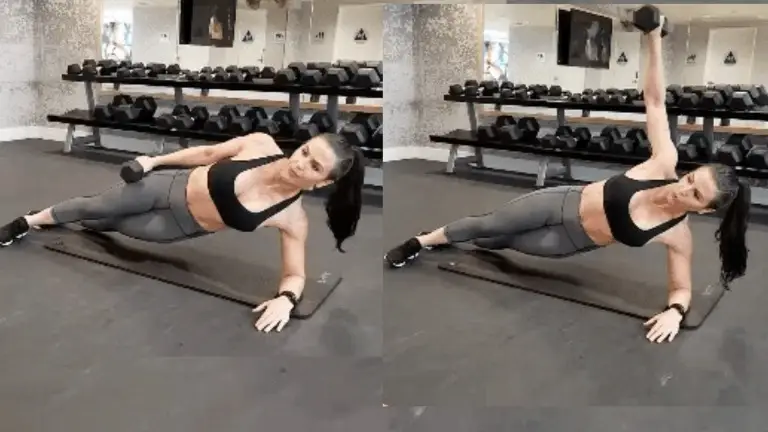
How To Do Side Plank Lateral Raise
- Get in a side plank position by lying on your left side on the floor.
- Hold a dumbbell in your top hand, with your arm resting along the side of your body.
- Slowly raise the weight, making sure not to extend beyond your shoulder.
- Slowly lower your arm back down. Complete the desired number of repeats.
- Pause briefly at the top, then lower the weight back down in a controlled manner.
Tips
- Your body should form a straight line from head to toe.
- Avoid using momentum or swinging the weight.
Know More: Side Plank: Benefits, Variations, Muscles Used, Tips
5. Dumbbell Lunge With Twist
The dumbbell lunge with a twist is a compound exercise that combines lunges with a twisting motion, targeting the leg muscles, core, and obliques.
However, this exercise requires good balance, so you should start it without weights until you learn the proper form.
I enjoy this exercise because I feel that my obliques are completely trained after doing it.

How To Do Dumbbell Lunges With Twist
- Stand with your feet shoulder-width apart. With both hands, hold one dumbbell at your chest, gripping it on each end.
- Your back is straight, not arching or curving.
- Take a step forward and bend your knees to create two 90-degree angles with your legs.
- Slowly rotate your torso to the right. You should feel a nice stretch in your oblique.
- Take the arm back to its starting position. Repeat with the other foot.
- Keep alternating the leg with which you lunge twist
Tips
- Bend as far and low as possible without losing form.
- Keep your torso upright and your head facing forward.
- Take a step that allows for a comfortable lunge position.
6. Dumbbell T Push-Ups
T push-ups are upper body exercises, an advanced progression of the standard push-up that targets the chest, shoulders, and triceps.
The rotational component engages the core muscles, including the obliques, to stabilize and support the movement.
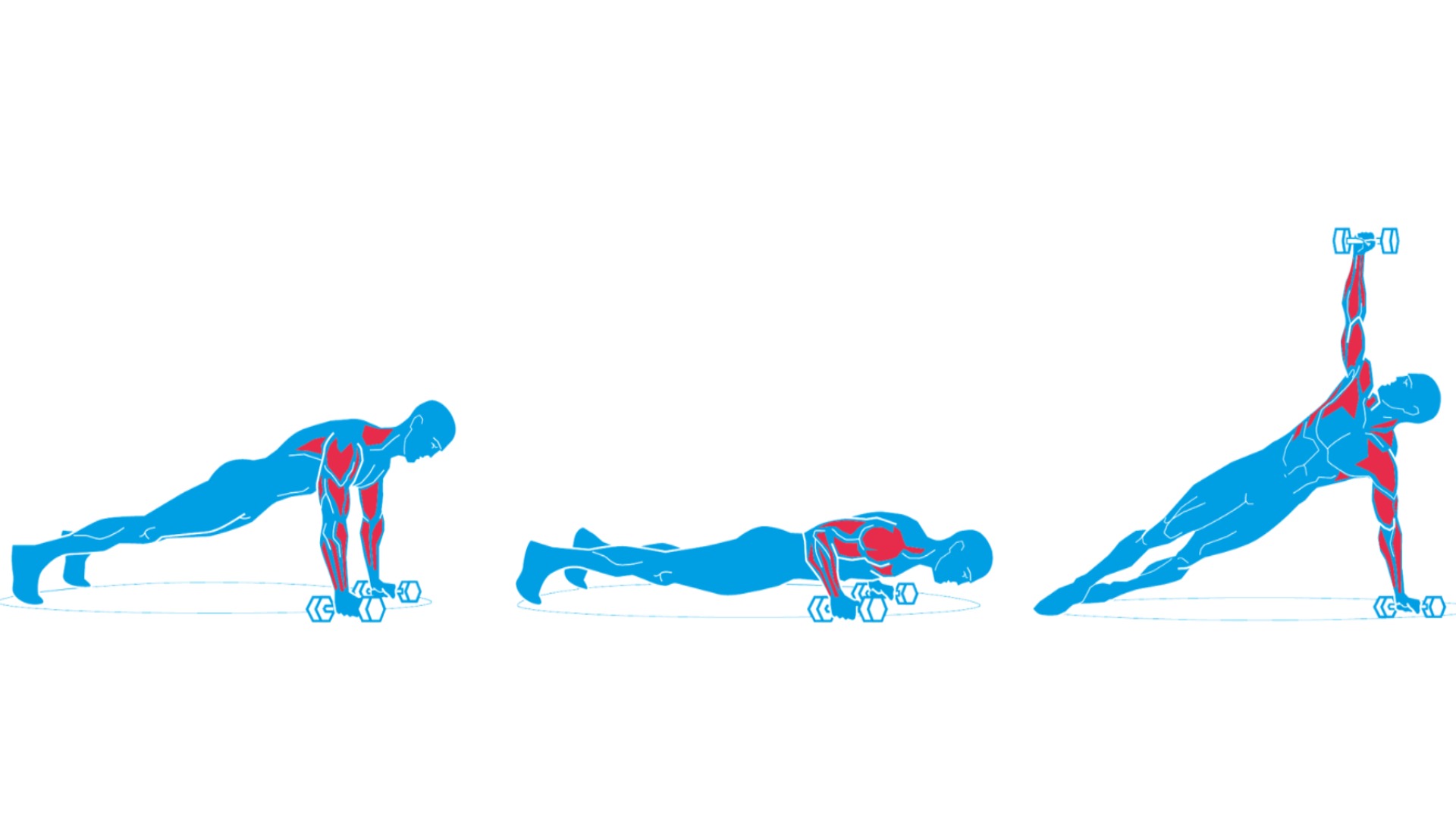
How To Do Dumbbell T Push-Ups
- Start in a high plank position with your hands shoulder-width apart on the dumbbells and wrists aligned with your shoulders.
- Your body is in a straight line from head to heels.
- Lower your body into a push-up by bending your elbows, keeping them close to your sides.
- As you push yourself back up, lift one arm from the floor and raise towards the ceiling while twisting your torso to the side.
- Roll onto the sides of your feet and always keep your body straight.
- Extend your left arm fully, creating a T shape with your body.
- Return to the starting position and repeat on the other side.
Tips
- Keep the core tight and back flat throughout the movement.
- Do not over-rotate when reaching the ceiling.
- Do not let the elbows flare out. Keep the elbows close to your sides throughout.
7. Dumbbell Windmills
Dumbbell windmills are a compound exercise that involves holding a dumbbell overhead and doing a side bend and rotation. The movement resembles the motion of a windmill, hence the name.
This exercise engages multiple muscle groups simultaneously, including the obliques, shoulders, hips, and core.
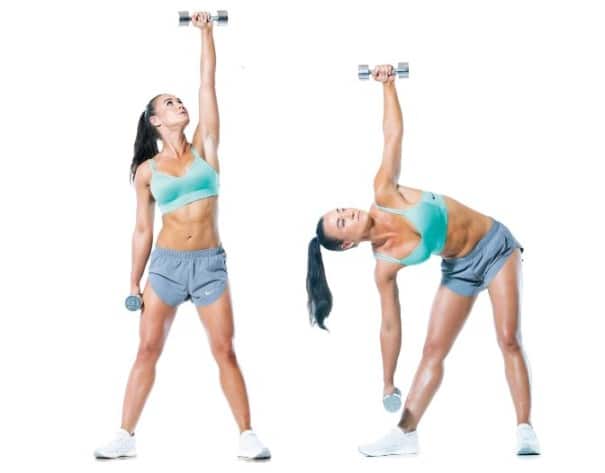
How To Do Dumbbell Windmills
- Stand with your feet a little wider than shoulder-width apart.
- Hold a dumbbell in your right hand with your arm fully extended overhead.
- Rotate your feet slightly to the left, so they are pointing at a 45-degree angle.
- You should bend your torso to the left side while keeping your right arm overhead for balance.
- Aim to touch the inside of your left foot with your left hand.
- Pause in this position for a moment, then return to the starting position.
- Do as many repetitions as you like on one side, then switch to the other side.
Tips
- Start with a light dumbbell or no weight at all.
- Keep your shoulder stable and avoid any excessive shrugging.
Know More: Best Abs Workout That You Can Do At Gym
8. Dumbbell Side Plank Reach Through
It is a challenging exercise that combines the benefits of side planks and reach-through movements. It engages the oblique muscles, challenges core stability, and works the shoulders and hips.
The exercise also involves hip abduction and rotation, which promotes mobility and flexibility.
To train my oblique effectively, I usually do 15–20 reps on each side in a controlled manner. You should also try this with lightweight.
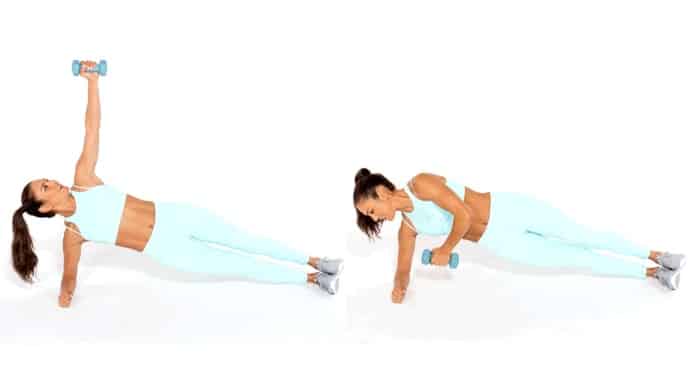
How To Do Dumbbell Side Plank Reach Through
- Lie on your side with your legs spread out and stacked together.
- Place your forearm on the ground directly under your shoulder.
- Lift your hips off the ground and make a straight line from your head to your feet.
- Hold a dumbbell in your top hand and extend your arm vertically toward the ceiling.
- While maintaining the side plank position, reach the dumbbell under your body and through the space between your body and the ground.
- Extend your arm as comfortably as possible, then bring the dumbbell toward the ceiling.
- Repeat the reach-through motion for the desired number of repetitions, then switch sides and repeat.
Tips
- Engage your core muscles to stabilize your spine and prevent your hips from sagging or rotating.
- Try to avoid swinging the dumbbell or using momentum when you work out.
9. Dumbbell Side Plank Hip Lifts
Dumbbell side plank hip lifts are a variation of the traditional side plank exercise that adds an extra challenge by incorporating hip lifts with dumbbells.
Lifting your legs also involves working out the hip abductor muscles, including the gluteus medius and minimus.
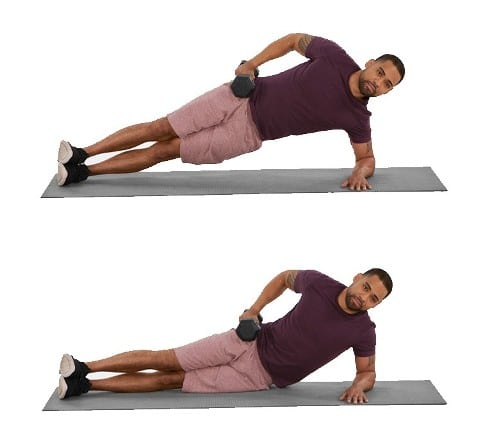
How To Do Dumbbell Side Plank Reach Through
- Lie on your side with your legs extended and stacked on top of each other.
- Place your forearm on the ground directly under your shoulder and your elbow in line with your shoulder.
- Hold a dumbbell in your top hand and position it against your thigh.
- With a stable core and engaged glutes, slowly lower your left hip and lightly tap it on the floor.
- Return to the side plank position by raising your left hip back to the starting position.
- You should repeat the exercise for the desired number of repetitions.
- Then, switch sides and repeat the same number of repetitions on the other side.
Tips
- Control the movement and avoid using momentum to lift your hips.
- Ensure that your core remains engaged throughout the motion.
10. Standing Dumbbell Oblique twist
Standing dumbbell oblique twist is an exercise that involves standing upright while holding a dumbbell in front of your chest.
It looks simple, but it’s a real challenge oblique muscles. If you are a beginner, keep a dumbbell close to the body.
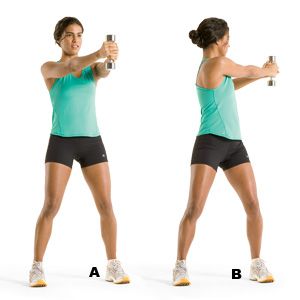
How To Do Standing Dumbbell Oblique twist
- Stand tall with your feet shoulder-width apart.
- Hold a dumbbell with both hands in front of your chest.
- Engage your core muscles to maintain stability throughout the exercise.
- Keep your balance and control intact as you twist your body to the right.
- Pause at the end of the twist to feel your oblique muscles contracting.
- Slowly return to the starting position, and then repeat the twist on the opposite side.
- Continue alternating twists from side to side for the desired number of repetitions.
Tips
- Keep your movements smooth and controlled.
- Keep your posture straight throughout the exercise and don’t lean forward or backward.
11. Dumbbell Overhead Standing Bend
Adding dumbbell overhead standing bend to your workout regimen can help build up and tone your oblique muscles, enhance your core strength, and promote a well-rounded physique.
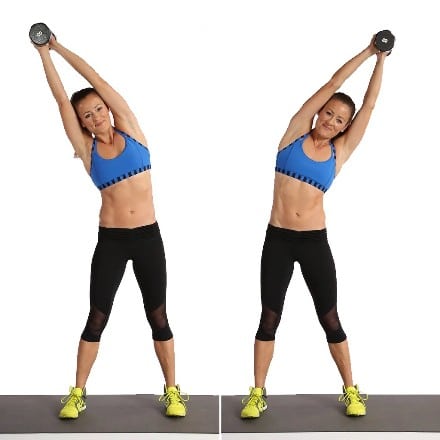
How To Do Dumbbell Overhead Standing Bend
- Start by standing with your feet shoulder-width apart and holding a dumbbell overhead.
- Slowly bend your torso to the right side.
- Pause briefly at the bottom of the movement, feeling a stretch on the left side of your torso.
- Engage your obliques and use your core muscles to lift your torso back up to the starting position.
- Repeat the movement on the opposite side by bending to the left.
Tips
- Please avoid bending too far or leaning forward too much.
12. Dumbbell Farmers Walk
Finally, try the dumbbell farmer’s walk if you want one more effective oblique exercise. It is a great exercise for improving grip strength and building abdominal and oblique muscles.
It also improves your overall strength and functional fitness by strengthening your core, back, glutes, legs, and gait.
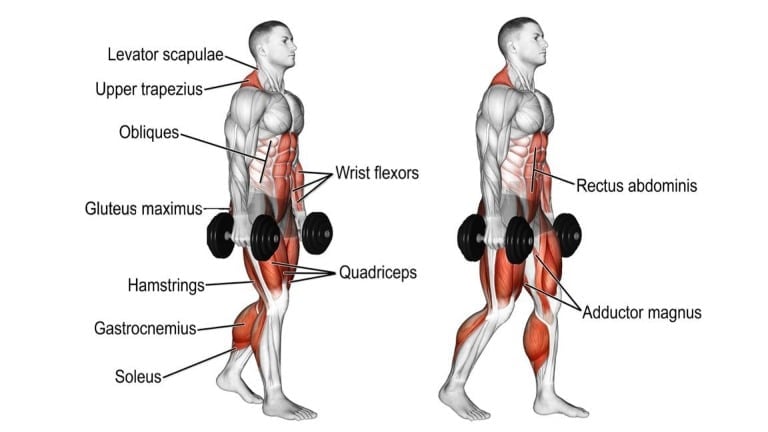
How To Do Dumbbell Farmers Walk
- Deadlift a pair of dumbbells from the floor.
- Reach down, bending at the hips and knees, and grasp the dumbbells in each hand.
- Hold the dumbbells at your side with a firm grip.
- Stand tall, keeping your shoulders, back, and core tight.
- Take small steps and walk forward at an even pace with your eyes focused straight ahead.
- Complete the desired number of steps, come to a stop, and place the dumbbells down while keeping a tight core and neutral spine.
Tips
- Focus on squeezing your shoulder blades and tightening your abs.
- Keep a neutral or straight spine throughout the movement to avoid injury.
Read More: 18 Abs Exercises You Can Do At Home Without Equipment
How to Train Oblique With Dumbbell
To create a good workout routine for oblique exercises, choose the right exercises, calculate the number of sets and reps, and consider the frequency of exercise.
1. Exercise Selection
Select oblique exercises that target the muscles from different angles. These can include exercises like dumbbell side bends, Russian twists, and planks with hip dips.
Combine weighted exercises with bodyweight exercises for a well-rounded oblique workout.
2. Sets and Repetitions
- Aim for 2-4 sets of each exercise to build strength and muscle.
- Perform 8-15 repetitions per set, focusing on maintaining proper form and control throughout.
- Adjust the weight or resistance level to challenge yourself while maintaining good technique.
3. Frequency
Aim to work your obliques 2-3 times per week, allowing for at least one day of rest between sessions.
This frequency allows for adequate recovery while still providing stimulus for muscle growth.
4. Progressive Overload
Over time, increase the intensity of your oblique workouts to keep progress going.
As you get stronger, increase the weight/resistance, add extra repetitions, or advance to more challenging variations of the exercises.
4. Core Integration
Remember that the obliques are part of your overall core musculature, so doing exercises that work the entire core, including the rectus abdominis and transverse abdominis, is important.
Boost your workouts with exercises like planks, backward crunches, and stability ball rolls to work out your whole body and keep you balanced.
5. Proper Form and Technique
Proper form and technique in each exercise are essential to maximize effectiveness and minimize the risk of injury.
Try to maintain a neutral spine, engage the core muscles, and avoid twisting or jerking motions.
7. Beginner Dumbbell Oblique Workout Routine
A sample dumbbell oblique workout routine that you can use to strengthen your core is here.
| Exercise | Sets | Reps | Rest Between Sets |
|---|---|---|---|
| Dumbbell Side Bends | 3 | 12-15 each side | 60 seconds |
| Russian Twists | 3 | 10-12 each side | 60 seconds |
| Dumbbell Woodchoppers | 3 | 10-12 each side | 60 seconds |
| Plank with Hip Dips | 3 | 10-12 each side | 60 seconds |
8. Add Strength Training
Strength training exercises should be included in your routine to build lean muscle mass. As muscle builds up, your body will burn more calories when you are at rest.
Use exercises that work multiple muscle groups, like squats, lunges, deadlifts, and chest presses.
These intense workouts demand more energy and can increase your metabolic rate both during the workout and afterward as your body recovers.
15 Best Weighted Oblique Exercises For A Strong Core
References
- Lee M, Han G. The effect of peculiar complex core balance training on isokinetic muscle functions of the knee and lumbus. J Phys Ther Sci. 2016 Apr;28(4):1294-7. doi: 10.1589/jpts.28.1294. Epub 2016 Apr 28. PMID: 27190470; PMCID: PMC4868230.
- Beimborn DS, Morrissey MC. A review of the literature related to trunk muscle performance. Spine (Phila Pa 1976). 1988 Jun;13(6):655-60. PMID: 3051439.

Manish is a NASM-certified fitness and nutrition coach with over 10 years of experience in weight lifting and fat loss fitness coaching. He specializes in gym-based training and has a lot of knowledge about exercise, lifting technique, biomechanics, and more.
Through “Fit Life Regime,” he generously shares the insights he’s gained over a decade in the field. His goal is to equip others with the knowledge to start their own fitness journey.

